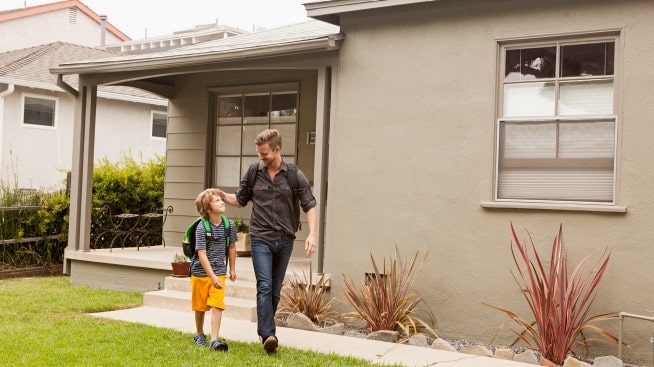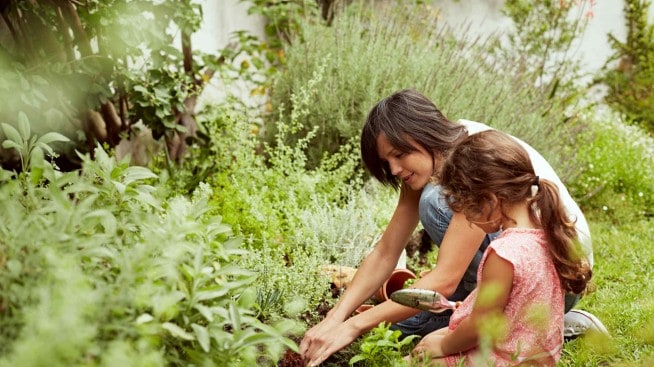Desert homes: A homebuyer's guide

The Southwestern region of the U.S. can be a stunning and unique place to live in, especially for those who appreciate the warm climate, distinct wildlife and natural beauty of the desert.
Are you thinking of buying a home in the desert? Let’s take a closer look at desert architecture, its main characteristics and the styles of desert homes.
Desert architecture
First, let’s talk about desert architecture in general and what you might expect if you decide to buy a home in the Southwest. There are some common traits many desert homes share, no matter the architectural style or the region. For example:
- Integration with the environment: From the most traditional to the ultra-modern, desert houses are likely to be built close to nature and mimic the outdoors in many ways. Southwestern architecture is known for incorporating natural materials (like clay, rammed earth and stucco) into construction, using earth tones both for the exterior and interior and emphasizing surrounding natural beauty.
- Ventilation and insulation solutions: Comfortable living in the arid climate requires excellent temperature control solutions. While you may think you need a powerful air conditioner, there are some other ways to help battle the extreme heat. Many desert homes come with thick walls for better insulation, ceiling fans for better circulation and window treatments to protect from the sun — all to ensure you feel comfortable during hot days and chilly nights.
- Resource efficiency: Life in a desert-style home could potentially lead one to embrace sustainability and conservation. Some Southwestern areas have drought issues and compel residents to use water more efficiently. Energy consumption could also be an issue if you constantly run your AC, but luckily, desert homes are perfect for going solar. Installing solar panels might help offset the electricity cost needed for cooling and help make your home more energy-independent.
- Flat roofs: Life in the Southwest comes with little precipitation, so you don’t need first-class drainage for rain and snow, which is why many traditional desert houses come with flat roofs. If you’re considering building your own house in a desert, you’ll be happy to know that flat roofs tend to be generally less expensive than pitched roofs and may be easier to install as well.
- Solar-friendly design: What’s more, flat roofs are ideal for solar panel installation, as there’s no need to drill holes in the roof (unlike with pitched roofs). Flat roofs also make the panels easier to remove, if needed. Finally, solar panels on a flat roof might not even be visible from the street, meaning they’re unlikely to affect curb appeal.
Types of desert homes
Desert architecture comes in different styles, but there are similarities between both their traditional roots and modern structures. Homes that fall under desert architecture styles are usually minimalistic, with clean lines and neutral colors. Let’s take a closer look at the home styles you're most likely to find in the Southwest:
- Adobe houses: Adobe-styled houses take their name from adobe bricks used for construction. Just like these bricks, which are made from organic materials such as straw and mud, these houses are all about coherence with nature. Adobe is known for adjusting well to extreme temperatures, absorbing heat throughout the day to keep the inside cool, and then slowly releasing it overnight. You can recognize adobe-styled houses by their iconic flat roofs, smooth walls, earthy tones and minimalistic lines.
- Spanish Colonial: Spanish Colonial houses trace their beginnings to a few hundred years ago, during the historical era of the same name. These houses have easily recognizable white stucco walls and red clay tiled roofs. Similar to adobe houses, Spanish Colonial homes have thick walls and small windows to counter desert heat.
- Ranch-style home: One of the more common types of houses in the U.S., these single-story homes have spread-out layouts, large windows perfect for enjoying the landscape and designated patios. Old ranch houses were traditionally built using adobe bricks, which help the inside stay cool in the heat.
- Desert modern homes: Desert modernism is characterized by large windows, clean lines and possible use of specialized, insulating concrete — all elements of standard modernist houses. At the same time, these homes integrate features present in other types of houses commonly found in the Southwest. Longtime staples of desert architecture like muted exterior colors, flat roofs and a focus on the surrounding nature all help to make desert modernism distinct from its counterparts.
Pros of living in the desert
Life in a desert is a unique experience, and it's necessary to weigh its pros and cons to know whether it suits you. People may choose to move to a desert house for a variety of reasons, such as:
- Natural beauty: Desert vistas have a distinctive charm that wins the hearts of many people over urban landscapes or green hills. Here, you may also encounter some wildlife that is not present in any other region.
- Sunny weather: Sunlight comes with many potential health benefits, including boosting the immune system, supporting bone health and lowering the risk of seasonal affective disorder (SAD).
- Lower population density: Those who get easily tired of the hustle and bustle of a large city and everyday crowds may want to escape to the desert and spend more time alone with their thoughts.
- Various outdoor activities: If you love nature, you might discover there are plenty of things to do in the Southwest. Locals enjoy hiking, rock climbing and stargazing, among other activities. Whether you prefer an active lifestyle or slow walks and nature observation, you can find both in the desert.
Cons of living in the desert
Living in a desert house may come with challenges that are necessary to consider if you are thinking of making a move. They include:
- Harsh climate: Living in the desert, you should be prepared for some rough weather conditions. The temperature fluctuations between day and night may be extreme, and deserts are also known for dust storms, wildfires and sporadic intense rains.
- Water scarcity: Over recent years, parts of the Southwest have faced some water shortage issues. If you plan to move to this area, you might have to be more conscious about water usage and check in advance whether your new house has a steady water supply.
- Isolation: Depending on the area where your home is located, you may find yourself remote from modern conveniences or even your closest neighbors.
- Limited job market: Not every job is compatible with a desert lifestyle. Depending on your occupation, you might have to drive further or look into remote opportunities.
- Utilities Cost: Due to longer heat months, utilities costs such as electricity, water bills, AC bills tend to be higher and more expensive than normal.
What to look for when buying a desert home
Does buying a desert home sound exciting to you? If you decide to buy a house in a desert or build your own place, it’s important to know what features to account for. Temperature control might be more important than ever when choosing a home in a desert. You may want to pay particular attention to the HVAC system, floor plan and window treatments. Additionally, it may help to inquire about the materials used for construction. Adobe, stone or insulating concrete forms (ICFs) are some popular options for hot climates.
In addition to the above, you’ll need to consider resources such as water and electricity. When house hunting in the region, you may want to ask where the electricity comes from: Is the home connected to the local power grid, or does it rely on solar power? Similarly, look into the water source to ensure it’s reliable, as water can be scarce in desert regions. Does the home have a well, or does the water come from a municipal water supply?
Finally, pay attention to the outdoor area and house landscaping. You might be able to have a green lawn, but it requires significant money and resources to keep it lush. Instead, you may want to embrace desert landscaping and use cacti, succulents and natural elements such as rocks or stones.
In summary
Desert homes come in all shapes and sizes, but their primary mission is to battle harsh weather conditions and make life indoors as pleasant as possible. If you’re a potential buyer, you may want to pay extra attention to the insulation, cooling system and water and energy supply. Desert living is somewhat of an acquired taste, but if you decide it’s for you, it also has the potential to be a uniquely interesting experience.



